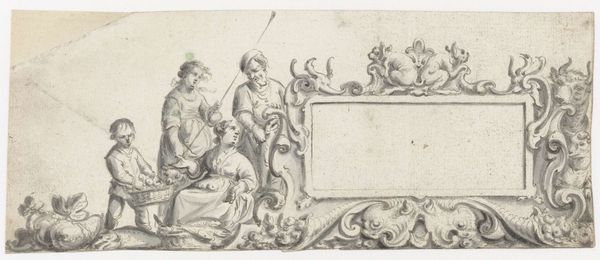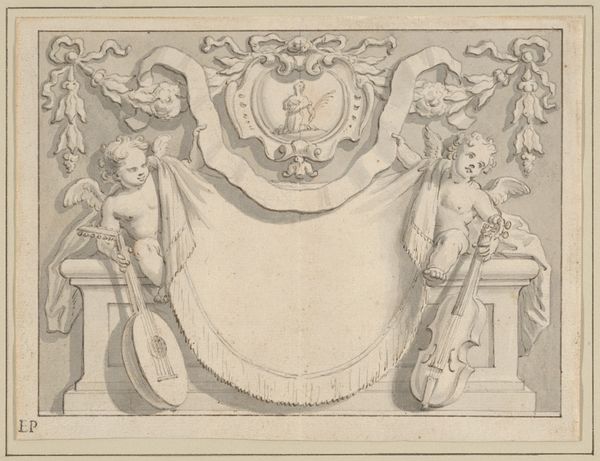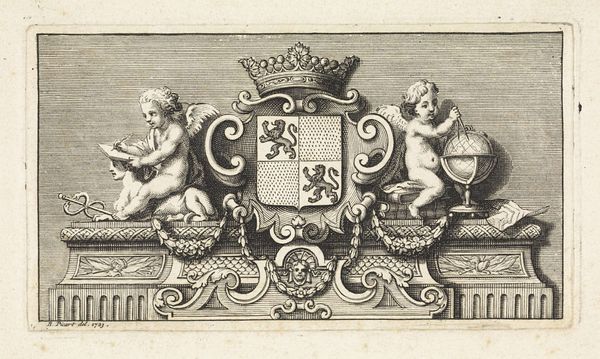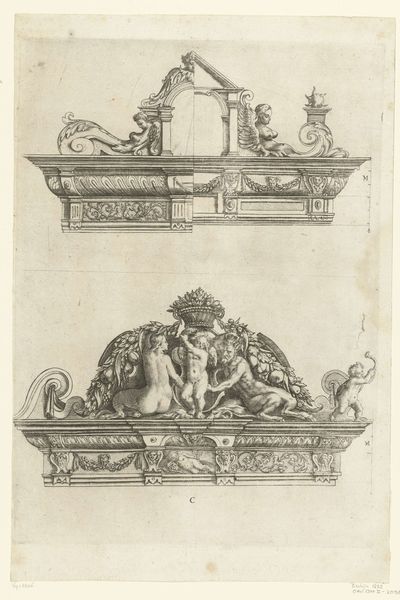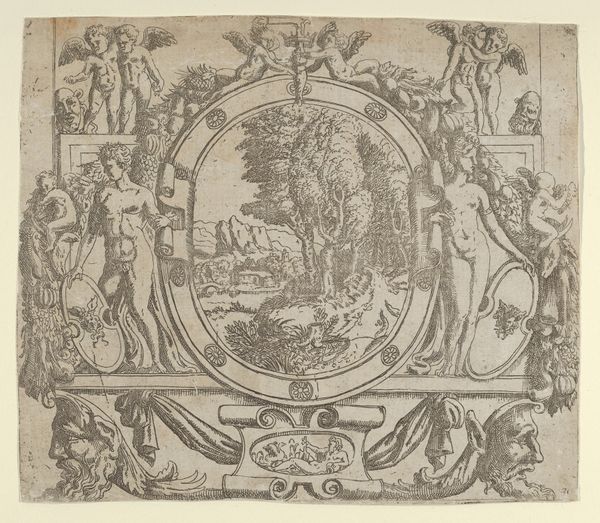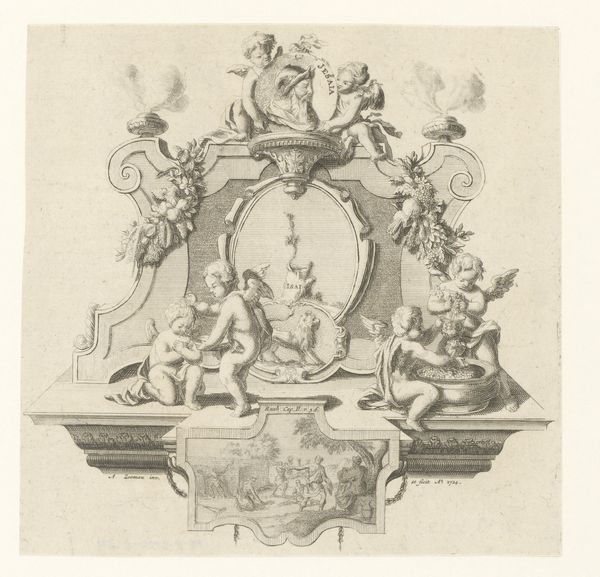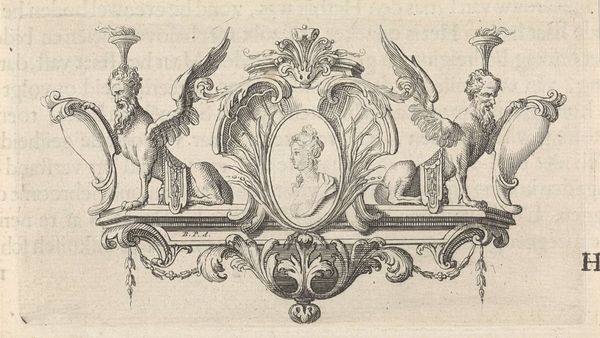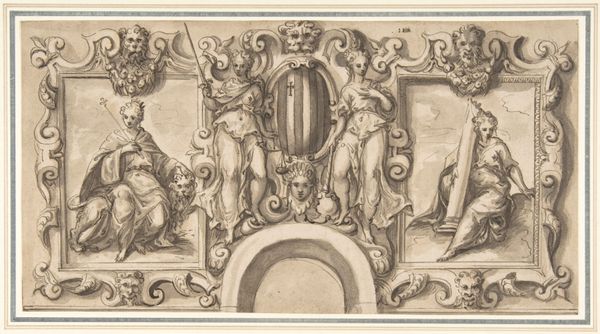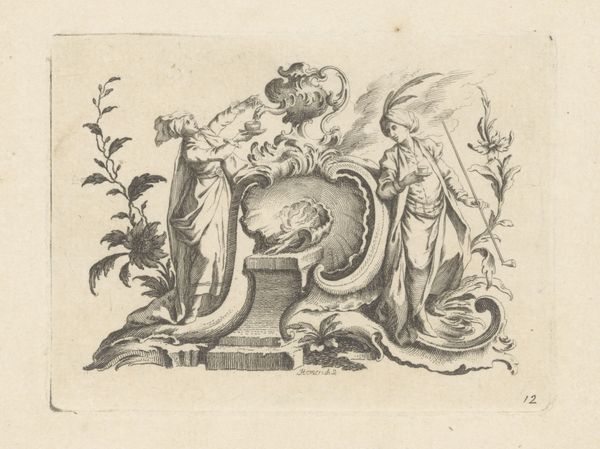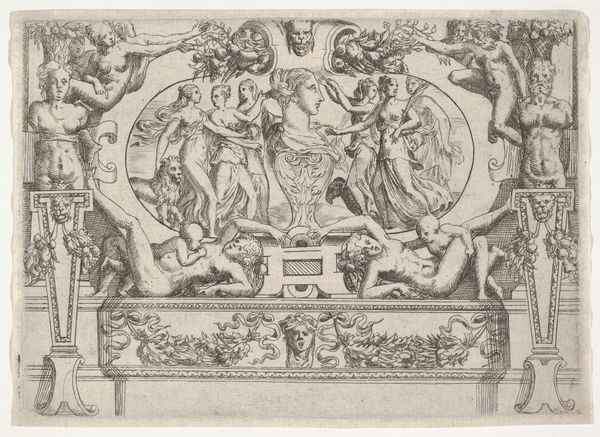
drawing, paper, ink
#
drawing
#
allegory
#
baroque
#
paper
#
ink
#
history-painting
Dimensions: height 102 mm, width 163 mm
Copyright: Rijks Museum: Open Domain
Curator: Let's turn our attention to a Baroque drawing entitled "Rechthoekige cartouche met een wapenschild en vijf figuren", created by Pieter Jansz. around 1657 to 1662. It depicts a rectangular cartouche meant to hold a coat of arms. Editor: It strikes me as a piece brimming with intended grandeur. The interplay of cherubic figures and the bold architectural framework speaks to an ambition that perhaps exceeds the drawing’s modest scale. The texture of the ink on paper also contributes a tactile element; you can almost feel the artist's hand. Curator: The function is important. This wasn't meant as a finished artwork, but more likely as a design proposal for a decorative element, maybe for a building façade or interior. The Baroque period loved this kind of elaborate ornamentation, reflecting power and status. Editor: Absolutely. Considering the material aspect, what kind of paper and ink did Jansz. use, and where would he have sourced it? Were there specific paper mills favored by artists at that time, and what role did the trade networks play in material accessibility and artistic output? That helps define the labor of producing it. Curator: That’s a good question, the materials reveal connections with broader commercial routes. More fundamentally, the iconographic choices reinforce societal values. We see figures that likely embody allegorical virtues appropriate for the family whose arms would occupy the cartouche. Editor: Right. It’s intriguing how the empty shield is staged almost like a theatre, prompting thoughts on performativity of status. The use of specific bodies--the chubby cherubs, the semi-nude woman with the cornucopia--what kind of visual language do they form and what social relations of gender, class, and power did this language then uphold? Curator: Exactly. The history-painting element alludes to an ideal past, imbuing the present owners of the coat-of-arms with a sense of lineage. The piece acted as a symbolic bridge. Editor: Well, it makes me appreciate the often-overlooked labor of artisans whose work served ideological functions while expanding economic networks through resource procurement. I suppose in that way, this little drawing epitomizes baroque art. Curator: I agree. Focusing on its original context sheds light not only on artistic practices but on the workings of society itself during that era.
Comments
No comments
Be the first to comment and join the conversation on the ultimate creative platform.
